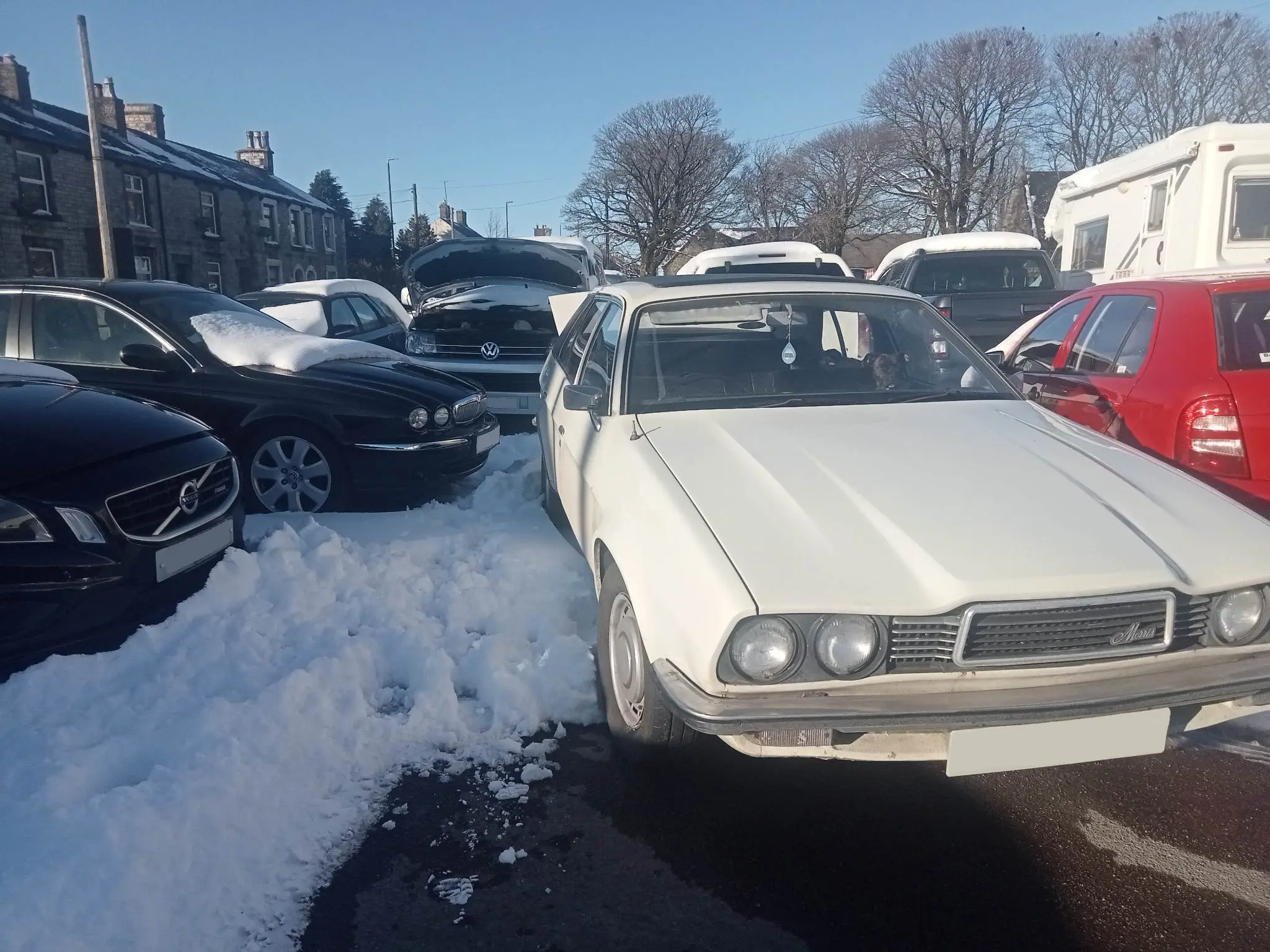MEET THE OWNER – DANIEL NICHOLS AND HIS MORRIS 1800HL
02 June 2023
Earlier this year, Daniel employed a very unusual car for work duty. Of course, any BL ‘Wedge’ is a fascinating sight, and the Nichols HL was deployed “on the school run and delivering modern car parts for repair. In the last six months, I boast she’s done 4,000 miles on main car duty, and was only a fan belt short of 100% reliable!”. Equally importantly, this is not a Princess but an astoundingly rare Morris 1800 HL.
When British Leyland launched the ADO71, “the biggest news since the Mini”, on the 26th March 1975, they marketed the 18-22 range as an Austin, a Morris or the flagship Wolseley
However, seven years after the formation of BL and 23 years after the creation of the British Motor Corporation, the dealership network was still not integrated. As a result, Leyland sold the basic and mid-range ‘High Line’ as either an Austin, trapezoidal-shaped headlamps or a Morris with a differently shaped bonnet and quad lights.
According to BL, “The HL variants of the new range are aimed directly at the executive market”, and so the equipment list included a clock, a voltmeter, a rear folding armrest, and a fuel cap lock. There were even vinyl rear three-quarter panels to wow the neighbours, and social prestige could be yours for just £2,215 for the 1800HL or £2,424 for the 2200H, the latter with PAS as standard.
BL’s aims for the 18-22 were to retain the strong points of its 1800 ‘Landcrab’ predecessor while improving on its styling, boot space and ‘bus-driver’ driving position. Its designer Harris Mann told the press:
The brief was to design a spacious family saloon with styling advanced enough to last right through the 1970s and beyond. I was to exploit to the full the unique advantages of British Leyland’s front-wheel-drive, transverse-engined concept. Despite its advanced styling, it was to have as much space inside as its predecessor. It was to be easy to enter and leave and to possess a structure fit for every foreseeable safety and impact regulation. Finally, the aerodynamics were to be good, for reduced noise, good high speed stability and low fuel consumption.

The Telegraph noted, “Leyland seems convinced it has produced a winner in its class, and after trying the car, I feel its confidence is justified”. Autocar thought the 2200HL version would “find wide favour with both the business man seeking a refined, comfortable mile eater and the family man who needs proper space for a growing brood”. Meanwhile, the editor of Motor Sport wrote: “To sum up, this car on which so many British hopes must rest is exceedingly pleasant, especially for covering long distances quickly”.
However, by September 1975, the impact of the Ryder Report meant abandoning separate Austin, Morris and Wolseley badges after Leyland had already invested £ ¾ million in launching and promoting the ADO71. Instead, they renamed the 18-22 range the Princess, which means the Nichols ‘Wedge’ is one of the rarest vehicles to bear the famous marque. Today, Daniel’s Morris is on lighter work duties “and is due some TLC”. As for its road manners, it lives up to that description from Motor Sport:
Wind noise is low, you can corner it as fast as you dare and it would be safe at even higher speeds; it is comfortable, spacious enough to be a VIP’s mini-limousine, crisply styled, and it rides comfortably.
Or, in Daniel’s words:
It is perfectly capable, speed-wise, on roads and motorways - not 80/90 mph, but 65-70 is happy – and, of course, the suspension means potholes are not an issue. All else is on par with history, driving position great, reversing visibility poor, but one description from decades ago was ‘like driving a big Mini’, and it truly is!
Not to mention still going strong after 48 years.
With Thanks To: Dan Nichols
